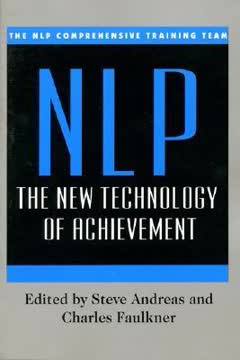Key Takeaways
1. Your Self-Concept: A Malleable Map for Life
Your self-concept is a sort of map of who you are.
Dynamic self-perception. Your self-concept isn't a fixed identity but a dynamic set of processes—"self-concepting"—that you use to think about yourself. It's a simplified map, constructed from selected and organized memories, guiding your actions and understanding of the world. Just as a map simplifies a city, your self-concept simplifies the vast territory of your experiences.
Conscious construction. This map is not static; it's continuously built and can be consciously modified. Since everyone has experiences of both strengths and weaknesses, your current self-concept is just one of many possible versions you could create from your life's wealth of memories. This inherent flexibility means you possess immense freedom to reshape who you are.
Practical application. Understanding your self-concept as a malleable map empowers you to actively strengthen qualities you like and change those you don't. This practical approach, unlike mere theoretical descriptions, offers concrete methods to improve your life by intentionally redesigning your internal blueprint.
2. Self-Esteem: The Natural Outcome of Aligned Values
When your self-concept is aligned with your values, you can enjoy high self-esteem.
Result, not a pursuit. Self-esteem is not something you can directly acquire; it's a natural consequence of evaluating your self-concept against your personal values. If your actions and self-perception align with what you genuinely value, positive self-esteem automatically follows. Conversely, misalignment leads to low self-esteem.
Beyond external praise. Unspecified praise, like telling a child "You're great!" without context, provides "other-esteem" but doesn't build lasting self-esteem because it lacks experiential data. True self-esteem is built when you recognize your behaviors embodying your values, such as:
- Helping someone in need and valuing kindness.
- Persisting through a challenge and valuing tenacity.
- Learning a new skill and valuing growth.
Heterarchy of values. While conscious minds often seek rigid value hierarchies, our unconscious operates as a flexible "heterarchy," where the importance of values shifts with context. Problems arise from imposing rigid hierarchies that ignore this natural flexibility, leading to internal conflict and dissatisfaction.
3. Durability & Responsiveness: Hallmarks of a Healthy Self
All the processes that make the self-concept durable also make it more sensitive and responsive to feedback.
Intertwined strengths. A healthy self-concept is both durable—strong and resilient in the face of challenges—and accurate, reflecting your actual behaviors and attitudes. Crucially, these two qualities are not in opposition; the very mechanisms that make your self-concept durable also enhance its sensitivity to corrective feedback. This allows for continuous, comfortable self-correction.
Avoiding the "false self." A self-concept unresponsive to feedback can become a "false self," leading to denial and an unacknowledged "shadow self." When feedback is finally confronted, the disparity can cause a painful collapse. A healthy self, however, integrates feedback early, preventing such crises.
Unconscious competence. Ideally, your self-concept operates unconsciously, like a "peak performance" state, freeing your attention for the task at hand. Self-consciousness, in contrast, interferes with effectiveness. The goal is an automatic, integrated self-concept that supports your actions without requiring constant conscious monitoring.
4. The Recursive Power of Your Self-Concept
If I have an idea about a rock, that may affect how I think and act toward the rock, but it doesn't change the qualities of the rock itself. But when I have an idea about myself, that does loop back and affect my attitudes and behaviors.
Self-fulfilling prophecy. Your self-concept is a recursive system, meaning it refers to itself and acts upon itself, creating powerful self-fulilling prophecies. If you believe you are clumsy, you'll notice and reinforce clumsy actions, perpetuating the belief. Conversely, believing you are graceful will highlight graceful moments.
Future-oriented drive. It's also a feed-forward system, constantly propelling you toward becoming the person you envision. By setting internal goals for who you want to be, your self-concept programs your present actions to align with that future identity. This internal programming can be virtually instantaneous, as it exists within your mind.
Widespread impact. Because your self-concept is a large generalization, changes within it radiate throughout your entire life, affecting countless behaviors and experiences across time and space. A shift in how you see yourself can spontaneously alter seemingly unrelated actions, demonstrating its profound and pervasive influence.
5. Strengthen Your Self by Integrating Mistakes
Having a few counterexamples in your database actually strengthens it.
Beyond perfectionism. Counterexamples—times you didn't exhibit a valued quality—are vital for a robust self-concept. A database with a small, deemphasized number of integrated counterexamples is less "pure" but more real and credible, like steel being stronger than pure iron. This prevents the rigid, unsustainable burden of perfectionism.
Enhanced feedback. Integrating counterexamples makes your self-concept more stable and open to feedback. Instead of threatening your identity, mistakes become valuable information, alerting you to areas for growth. This contrasts sharply with a "pure" database, where a single counterexample can shatter the entire generalization, leading to denial and rigidity.
The "shadow self." Avoiding counterexamples contributes to an unacknowledged "shadow self," as denied behaviors remain outside conscious awareness. Integrating these experiences brings them into your sense of self, fostering wholeness and reducing internal conflict.
6. Transform Your Mistakes into Future Resourcefulness
When you transform a counterexample into an example of how you want to be if that kind of situation ever occurs again, you can expand your ability to have that quality even in those more difficult situations.
Proactive learning. Beyond simply integrating mistakes, transforming them is a powerful way to expand your capabilities. By re-envisioning past counterexamples with desired responses, you create new, resourceful behaviors for future similar situations. This prevents unwanted actions and provides additional choices.
Strategic reframing. You can also adjust the scope of a quality to manage counterexamples:
- Narrowing: Redefine the quality to exclude specific contexts (e.g., "I am kind, unless overtired").
- Widening: Reframe short-term "unkindness" as long-term "kindness" (e.g., tough love for a child's future).
- Integrating: Find a larger, overarching quality that encompasses both the desired and undesired behaviors (e.g., "flexibly paying attention to all my needs" includes both motivation and rest).
Efficient transformation. Grouping similar counterexamples and transforming the "worst" one can efficiently generalize the change to the entire group. This systematic approach simplifies the process, making it faster and more effective than addressing each mistake individually.
7. Build New Qualities from the Ground Up
As long as you build this new quality in the same form as your unique positive template, it will function in the same way, providing a solid and unconscious basis for knowing that you have this quality, and being who you want to be.
Creating from a "null set." When you lack a specific positive quality (a "null set" where there's no existing database, positive or negative), you can systematically build it. This involves identifying the desired quality, ensuring no conflicting negative beliefs exist, and then assembling positive examples into the structure of your existing "positive template" (how you represent qualities you already like).
Peter's transformation. The demonstration with Peter, who didn't think of himself as "lovable," illustrates this. By helping him gather memories of being appreciated and cared for, and organizing them into a "purple glow" template, he developed an internal, unconscious knowing of being loved. This eliminated his need for constant external validation.
Beyond specific skills. This process isn't about acquiring specific skills, but about cultivating general attitudes and capacities like tenacity, patience, or curiosity. These qualities form a resourceful personal foundation, guiding your responses across a wide range of challenging events, independent of specific contexts.
8. Resolve Ambiguity for Unwavering Self-Certainty
When an aspect of yourself is ambiguous, that indicates that there is a roughly equal number of positive examples and counterexamples, and because of this, you can't come to a firm conclusion.
Clarity from conflict. An ambiguous quality, where you're unsure if you possess it (e.g., sometimes considerate, sometimes not), stems from a roughly equal number of positive and negative examples. Resolving this ambiguity transforms uncertainty into a clear, positive self-concept, aligning with your values and boosting self-esteem.
Systematic transformation. The process involves:
- Eliciting your positive template and the structure of the ambiguous quality.
- Congruence checks to ensure no objections to an unambiguous positive identity.
- Reframing some counterexamples as examples of other valued qualities.
- Grouping and transforming remaining counterexamples into positive examples, integrating them into your positive template.
Beyond "either/or." This detailed approach, unlike cruder "polarity integration" methods, respects all parts of your experience. It avoids simply slamming opposites together, instead carefully transforming and integrating, leading to a more elegant and lasting resolution without extensive post-integration sorting.
9. Escape the "Not-Self" to End Internal Conflict
When someone says, "I'm not cruel," that usually elicits a very different set of representations than if you say to yourself, "I'm clumsy."
The trap of negation. Defining yourself by what you are not (e.g., "I'm not cruel" instead of "I'm kind") creates a "not-self." This often elicits images of the very thing you're negating, leading to an internal conflict between conscious rejection and unconscious identification. This internal division can manifest as a "shadow self" or even paranoia.
Paranoia's roots. Extreme "not-self" thinking, where all qualities are defined by negation, can lead to paranoia. By constantly focusing on what you're not, you project those feared qualities onto the world, seeing threats everywhere and feeling isolated. This is a "going away from" motivation with no positive direction.
Transforming negation. The solution is to replace negated representations with positive affirmations. For example, instead of "I'm not cruel," ask "What are you?" and build a database for "kindness." This simple shift eliminates internal conflict, integrates the shadow self, and frees up mental resources for positive action.
10. Master Your Boundaries for Protection and Intimacy
Understanding how we think of our boundaries allows us to make changes in how we represent them, and this can be very useful in changing how we experience being in the world, and our connections with other people and our surroundings.
Flexible self-definition. Your boundaries define the extent of your self-concept, influencing how you connect or separate from others and your environment. Problems arise from boundaries that are too rigid (leading to isolation), too weak (leading to overwhelm), or too brittle (prone to shattering).
Conscious adjustment. You can consciously adjust your boundaries to suit different contexts:
- Expand them to include others for rapport and intimacy.
- Strengthen them to protect against intrusion or verbal abuse.
- Make them permeable to allow useful information in while filtering out noise.
This gives you more choice and control over your interactions.
Internal boundaries. Just as you have external boundaries, you also have internal ones that separate parts of your body or mind (e.g., intellect from emotions). Dissolving rigid internal boundaries, like the "mind/body split," fosters wholeness and allows for a more integrated experience of self.
11. Transform Disconnection into Resourceful Connection
In a difficult situation, you want to be as resourceful as possible, in order to deal with the real-world challenge that you face. Now I want you all to look at these two lists, and ask yourself the question, "Which of these two experiences is more resourceful?". . . Connection is much richer and more resourceful, with many more submodality distinctions, and much more information.
The cost of disconnection. When facing challenges, we often instinctively disconnect, pulling in our boundaries and entering an unresourceful state characterized by limited information (e.g., dark, dissociated, tense). This impoverished internal state hinders problem-solving and makes us feel stuck.
Mapping to connection. By consciously "mapping across" from disconnection to connection—transforming the submodalities of a problem experience to those of a connected state (e.g., dark to bright, tense to relaxed)—you heal internal divisions. This doesn't change external reality but makes you more resourceful in dealing with it.
Empowered interaction. Healing internal disconnection frees up mental resources and fosters compassion, leading to more effective and positive interactions with others. This aligns with ancient wisdom that emphasizes connection, even with adversaries, as a path to resolution and personal strength.
12. Cultivate an Inner World of Beauty and Strength
How about building in yourself a personal quality of being determined to live in a mind filled with beauty, truth, and pleasure, and begin, now, to collect experiences that nourish you and assemble them, just as you do for any other quality in yourself?
Intentional internal environment. Just as you furnish your home, you furnish your mind with experiences. Instead of dwelling on resentments, disasters, or unpleasant memories, intentionally collect and assemble experiences of beauty, truth, and pleasure. This proactive curation of your internal world profoundly impacts your well-being.
Self-discovery through appreciation. Every time you embrace something wonderful from the outside—be it art, nature, or another person—you also discover more about your own capacity for appreciation, care, and joy. This process enriches your internal world and expands your sense of self.
A lifelong journey. The journey of transforming your self is ongoing, a continuous process of self-discovery and refinement. By applying the principles of self-concept, you gain the power to consciously shape your identity, fostering resilience, connection, and a life aligned with your deepest values.
Last updated:
Review Summary
Transforming Your Self receives positive reviews for its insights on self-concept and personal growth using NLP techniques. Readers appreciate the detailed exercises, examples, and metaphors provided. The book is praised for its tools in identity-level changes and self-discovery. Some find the visualization-heavy approach challenging, and the seminar-style presentation can be awkward. It's recommended for those familiar with NLP or interested in self-transformation, though beginners may struggle. Overall, reviewers find the concepts valuable, even if the execution isn't always perfect.
Similar Books
Download PDF
Download EPUB
.epub digital book format is ideal for reading ebooks on phones, tablets, and e-readers.








